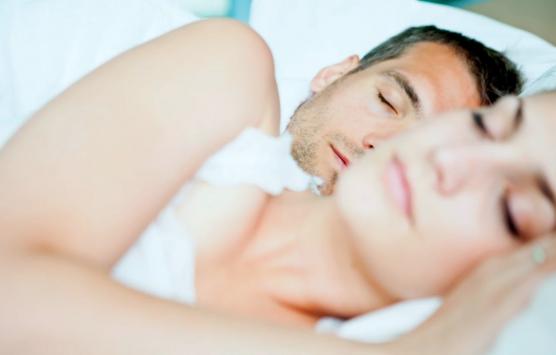Sleep apnea is a breathing disorder that a lot of people encounter (as its name suggests) in their sleep. The reasons why this is so troublesome are numerous. First of all, it causes snoring, which can disturb your partner, thus affecting your personal relationship. Sleep apnea can also lower the quality of your sleep, which is a major medical concern, on its own. It can lower your level of alertness, make you worn out, destroy your immune system and much, much more. In order to deal with this issue, you should learn a thing or two about sleep apnea and then explore your options in treating it. Here are some of the best home treatments for sleep apnea.
- Use a humidifier
Dry air can make your sleep apnea situation much worse. So, you could try several different methods for resolving this issue. First, you could purchase a humidifier and place it somewhere in the room. Alternatively, if the temperature and climate allow it, you could even try sleeping with a partially open window. Now, other than just a regular humidifier, you could look up some anti-inflammatory essential oils that you could add to the mix. This way, you get to enjoy the passive perks of this incredible method.
- Change your lifestyle
There are a bunch of different habits and lifestyle behavior patterns that may make your sleep apnea worse. For instance, smoking causes swelling and inflammation of various parts of your respiratory system, while drinking too much alcohol may release your throat muscles too much (which also contributes to the problem). In other words, quitting. Now, quitting these two bad habits is something that you should already be considering. Now, you just have one more reason to do so.
- Get yourself a mouth guard
One of the simplest ways to handle your problem is to buy a sleep apnea mouth guard. Unlike any other methods on this list, this merely requires you to insert a mouth guard into your mouth before going to bed, while other methods demand that you change your habits or add new accessories to the bedroom. You can choose between flex, edentulous or acrylic mouth guard, depending on your specific needs and preferences. You should, nonetheless, do some research online, prior to this.
- Practice yoga
This idea might sound a bit outside of the box but there are a lot of perks to practicing yoga. First of all, it is true that breathing is a matter of reflex and not something that you directly control. However, during your yoga exercises, you will have to learn a wide array of new breathing techniques. Once you spend enough time doing this, some of these methods will become a part of your muscle memory. This means that your body might start practicing these methods even while you’re asleep. Apart from this, yoga will keep you fit and mindful, both of these things are a vast improvement to your overall quality of life.
- Change your sleeping position
In the end, even by just changing your sleeping position you might make a significant difference when it comes to your treatment for sleep apnea. For instance, it’s a known fact that sleeping on your back, while not affecting the condition itself, may worsen your symptoms. This is why sleeping on your side or on your stomach may make things easier to bear. The best thing about this method is that it doesn’t require any type of preparation or investment. It’s something that you should try out the next time you go to sleep and check if it makes a difference.
- Check if apnea is your only problem
The fact that you have a flat level of energy, less concentration, that you’re gloomy or have a higher level of anxiety may all stem from poor quality of sleep. However, this doesn’t necessarily mean that you have sleep apnea. Moreover, even if you do have sleep apnea, this might not be the only thing ruining your sleep. Try reevaluating whether your sleeping problems stem from multiple sources. This way, you won’t get disappointed when your sleep apnea remedies don’t show admirable results. Even more importantly, you will know exactly what you should focus on in order to really solve the problem.
In conclusion
At the end of the day, surgery is always an option. Still, it’s an invasive option. The very thought of an invasive procedure, even a routine one, is far from pleasant. There’s always a risk that something could go wrong (even if the chances are fairly low). Most importantly, it’s a risk that you don’t necessarily have to take. The above-listed home treatments may yield the results you need and solve the problem without exposing you to unnecessary and unpleasant scenarios.
















